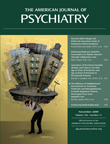Neighborhoods vary tremendously in levels of stressors, such as violence, noise, sanitation, and crowding
(1) . Although depressive symptoms have been demonstrated to be associated with neighborhood stressors and other factors
(2 –
4), there has been little attention in the empirical literature directed toward the impact of neighborhood factors on the recovery and well-being of psychiatric patients. In this issue of the
Journal, Stahler and colleagues
(5) present novel analyses of individual and geographic factors that predict rehospitalization and attendance at initial outpatient treatment following psychiatric hospitalization among patients who were diagnosed with comorbid mental health and substance use disorders. One of the study’s strengths is the prospective design. Another study strength is that the authors used census block groups, which are a more homogeneous geographic unit than zip codes.
The results of this study revealed significant associations between neighborhood factors and keeping outpatient appointments within 30 days postdischarge and rehospitalization within 1 year, yet we can only speculate on the mechanisms that link neighborhood factors to individual behaviors. The proportion of vacant housing predicted keeping the first outpatient appointment following hospitalization. It is unlikely, however, that somehow vacant housing per se impeded keeping this first appointment. The level of vacant housing may be a marker of neighborhood stressors, social disorganization, and public drug use. High rates of vacant housing may lead to social isolation, which is also a stressor and has been found to be associated with living in urban areas among vulnerable populations
(6) . Another possible pathway between geographic factors and poorer mental health outcomes was drug availability for these patients, who were already diagnosed with substance use disorders. Neighborhoods with more drug users tend to have greater drug availability and, consequently, may foster higher levels of drug use relapse, leading to missed outpatient appointments and rehospitalization. Future studies need to examine in detail the mechanisms that link geographic factors to mental health outcomes.
Not surprisingly, some of the geographic variables were not associated with the study outcomes. It is likely that there is heterogeneity of experience within neighborhoods, due in part to the amount of time patients spend in these geographic areas and to the variations of events within neighborhoods. In future studies, it may be useful to collect information about patients’ neighborhood routines and exposures within their neighborhoods. Moreover, since many inner city neighborhoods are highly stressful, it may be informative for researchers to examine the factors that contribute to successful re-entry into these toxic environments.
Although the study was prospective, it is not possible to establish definitive directionality in the causal pathways. Individuals who lack social and economic resources to assist them in keeping their outpatient appointments may reside in more disadvantaged neighborhoods. It is also possible that those with more serious psychiatric symptoms live in worse neighborhoods and are more likely to be rehospitalized.
The study results do have practical implication for patient care. Before patients are discharged, it may be feasible to conduct brief neighborhood assessments to assist in aftercare and to help prevent rehospitalization. Information on neighborhood factors could allow clinicians to identify potential stressors and enable them to work with patients on how to avoid and cope with these environmental stressors. For patients with a history of substance abuse, it may be helpful for patients to plan their neighborhood activities to avoid drug markets. In the present study, the distance from Narcotics Anonymous meetings was found to predict rehospitalization. As the authors point out, Narcotics Anonymous meetings may be an indicator of the concentration of drug users within a geographic area. However, avoiding drug users may be difficult or impossible in neighborhoods with a high density of drug sales.
In addition to illicit drug availability, it is likely that there are neighborhood factors that enhance daily routines, social support, and stability, which in turn may augment adherence to psychiatric medications and help to prevent rehospitalization. Neighborhood assessments may also provide clinicians and their patients with information on geographically based resources, such as self-help groups and social service resources. For severely impaired patients, information on their neighborhoods can be used to identify impediments to attending outpatient appointments in order to develop a realistic plan for keeping them. For patients with a history of depression, neighborhood assessments could be a resource for improving depression coping skills by identifying geographic areas to increase exercise and experience more frequent pleasurable events
(7) . Although the biopsychosocial model is one of the key tenets of modern psychiatric practice, research and treatment strategies at this neighborhood level are in an early phase of development. In addition to achieving a greater understanding of how neighborhoods influence mental health, we need to capitalize on neighborhood dynamics to more effectively prevent and treat mental illness.
The novel findings of Stahler and colleagues are intriguing and raise numerous questions about how geographic factors may influence mental health and service utilization. Spatial analyses of health behaviors are a new and burgeoning area of inquiry. It is important to delineate both the key research questions and how this information may improve the well-being of patients and optimize mental health services.

